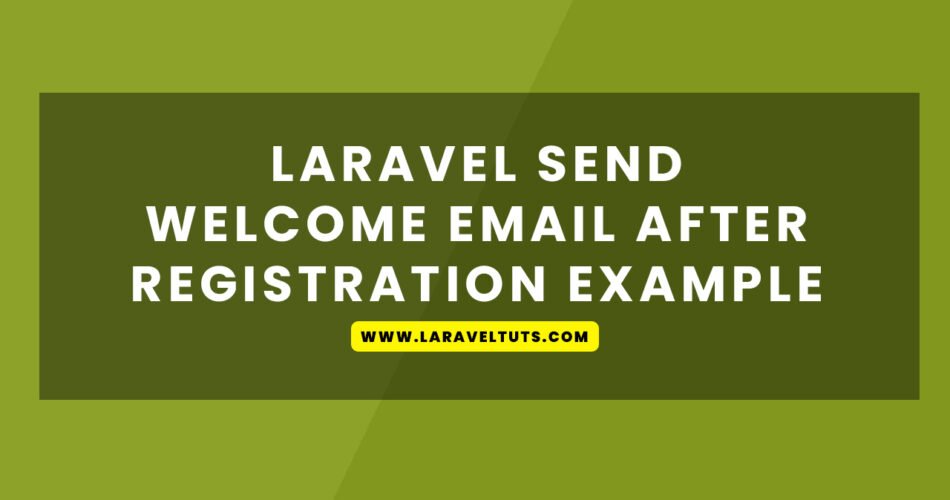Today we are going to learn Laravel Send Welcome Email After Registration Example. In today’s digital age, user registration is a common feature in web applications.
Whether it’s an e-commerce platform, a social media site, or a subscription-based service, welcoming new users is a crucial step in creating a positive user experience. One effective way to do this is by sending a welcome email after registration.
In this blog post, we will explore how to implement this feature in a Laravel web application.
Also Read: Laravel Convert String to Lowercase Example
Laravel – The PHP Framework of Choice
Laravel, a popular PHP framework, is known for its elegant syntax and developer-friendly features. It offers a wide range of tools and libraries to simplify the development process.
Sending welcome emails to new users is a breeze with Laravel thanks to its built-in support for email services.
Prerequisites
Before we dive into the implementation, make sure you have the following prerequisites in place:
- A Laravel application set up on your development environment.
- Composer installed for managing dependencies.
- An SMTP server or email service configured in your Laravel application.
Also Read: How to Install Sweetalert2 in Laravel 10 Vite?
Implementing Welcome Email in Laravel
Follow these steps to implement the welcome email feature in Laravel:
Step 1: Install Laravel’s Email Library
Laravel comes with an email library that makes sending emails a breeze. If you haven’t already installed Laravel, do so using Composer:
composer create-project --prefer-dist laravel/laravel welcome-email-exampleStep 2: Create a User Registration System
Set up a user registration system in your Laravel application.
You can use Laravel’s built-in authentication scaffolding or create a custom registration process as per your project requirements.
Step 3: Create the Welcome Email
Next, create a welcome email class using the Laravel Artisan command:
php artisan make:mail WelcomeEmailThis command will generate a new mail class in the app/Mail directory. You can customize this class to include the welcome message and any other content you’d like to send to new users.
Here’s an example of a WelcomeEmail class:
namespace App\Mail;
use Illuminate\Bus\Queueable;
use Illuminate\Mail\Mailable;
use Illuminate\Queue\SerializesModels;
class WelcomeEmail extends Mailable
{
use Queueable, SerializesModels;
public function build()
{
return $this->view('emails.welcome')
->subject('Welcome to Our Website');
}
}Also Read: Installing Socialite Package in Laravel 10
Step 4: Create the Email Blade Template
Create an email blade template in the resources/views/emails directory.
In this template, you can add the welcome message and any other information you want to include in the email.
Step 5: Sending the Welcome Email
In your user registration process (usually in the registration controller), import the WelcomeEmail class and send the email to the new user after successful registration.
use App\Mail\WelcomeEmail;
use Illuminate\Support\Facades\Mail;
// Inside your registration method...
Mail::to($user->email)->send(new WelcomeEmail());Also Read: Building a Laravel 10 CRUD Application: A Comprehensive Tutorial
Conclusion
Sending a welcome email to new users in a Laravel application is a straightforward process thanks to Laravel’s built-in email support.
By following the steps outlined in this blog post, you can create a warm and welcoming experience for your users, making them feel appreciated and engaged from the moment they sign up.
Remember to customize the email content and design to match your application’s branding and personality.
Implementing such features not only enhances user experience but also helps in building trust and fostering a strong relationship with your users. Happy coding!
